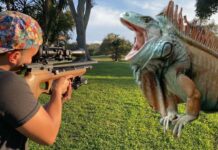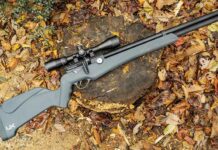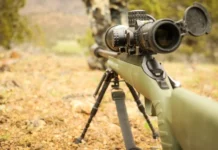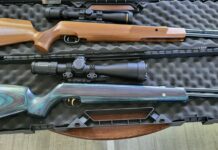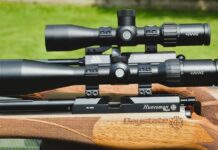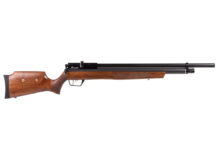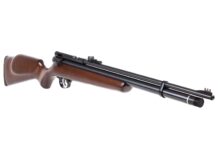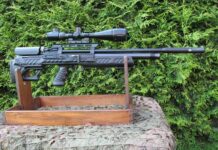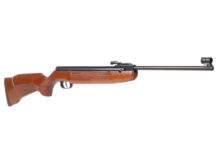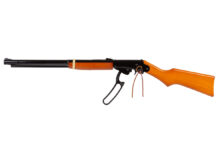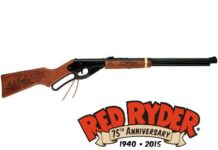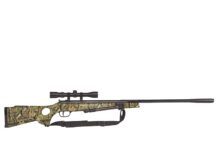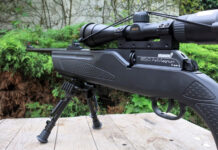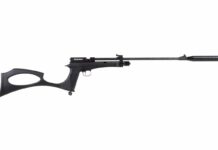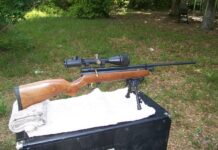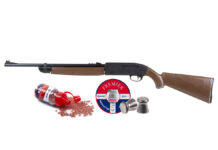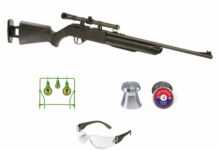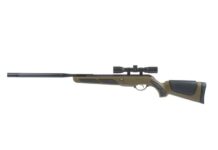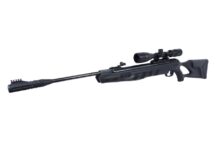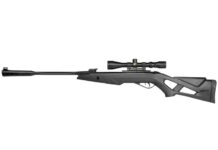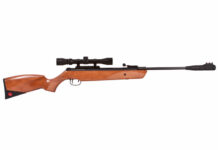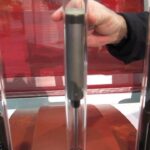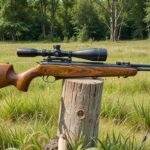This year, we decided to breed our sow, Boo, with Duroc genetics. Boo is a mixture of Tamworth and Berkshire genes, which in the past has led to piglets that are fast-growing, vigorous, and, I might add, quite cute to look at!
We wanted to give a new breed of pigs a try this year, however. We decided to go with Durocs. Durocs have a reputation for being some of the hardiest and quickest-growing pigs around.
Here’s what you need to know about the Duroc pig breed. That way, you can decide whether it’s right for you and your farm.
Table of Contents
About Duroc Pigs
A red pig with drooping ears, the Duroc is a wonderful breed to consider if you are interested in raising market pigs.
It is the second most common breed of pig in the US.
Most Durocs will be a deep mahogany color, as ours were, but you might also find some that are a pale yellow or gold color.
History of the Duroc Pig Breed
They were first bred in the early 1800s in New Jersey and New York. The original parents of the Duroc were red pigs from either state.
The pig is believed to get its red color from the Berkshire pig. The Berkshire is a breed that is now black but was once a rust color, similar to the modern Duroc. Some people also believe that the Duroc contains genetics that can be traced to the Guinea coast of Africa.
A very large pig, the Red Hog quickly rose to popularity for its massive size and its ability to produce large litters of piglets that grew exceptionally fast.
These Red Hogs were eventually bred into the Duroc-Jersey and what is today known as the Duroc. However, the breed wasn’t renamed until 1823.
In 1823, a man named Isaac Frink of Milton, NY raised a red boar of this lineage. It was prized for its carcass quality, growth rate, quiet disposition, and broad shoulder and ham areas.
Though smaller than many of the earlier pigs in this line that came out of New Jersey, it ultimately had a much better carcass quality. He named the breed the Duroc in honor of his famous Thoroughbred stallion, Duroc.
Eventually, the original Jersey line and this new Saratoga-based line were crossed to create a hog that was well-suited for the vast majority of farmers.
It was formally recognized in the creation of the American Duroc-Jersey Association in 1883 (renamed the United Duroc Swine Registry) in 1934.
The breed of choice for a large percentage of American farmers, the Duroc is also a good choice for the modern homestead.
Characteristics of Duroc Pigs
Although the Duroc is not the largest breed of pig you will find to raise on your farm, it is still nothing short of impressive. The average weight of a fully mature boar is close to 900 pounds, while a sow will be around 800 pounds.
With drooping ears, it’s easy to pick this pig out of a line-up of other pigs, most of which have erect ears instead.
As I mentioned earlier, most Duroc pigs will be a deep red in color. However, some are much lighter or even golden or orange in their appearance. Durocs are usually medium-length and have a slight dish of the face. They have large snouts and short, curly tails.
Benefits of Raising Duroc Pigs
1. Great for Outdoor Raising
Raising pigs outdoors, whether on pasture or in a woodland setting, is a great idea for so many reasons. This can really cut down on the amount of barn cleaning that you need to do. It also helps when it comes to improving the health of your animals.
Durocs are perfect for an outdoor environment because they are covered in dense, coarse hair that they shed come summertime. They also have tough, hard skin.
These pigs can tolerate both cold and warm weather with ease.
You don’t have to worry about them becoming sunburned, something that is all too common with other kinds of pigs. The Duroc can, in fact, tolerate most weather conditions without a problem.
As long as you have a muddy area for them to cool off, some rich pastures, and plenty of food and water, your Durocs will have everything they need.
2. Tender, High-Quality Meat
If you ever take a glance at a Duroc pig, your first thought will probably be, “blocky!” The Duroc has a stocky build with plenty of meat in the ham and shoulder area.
We found that the meat ended up being a bit more of a dark red in color, too. This was a testament to their diet as well as the fat distribution and leanness of the meat.
3. Fast Growth Rate
Durocs grow quite quickly, especially when compared to other breeds of pigs. In fact, we conducted a bit of a pseudo-experiment this year. In so doing, we raised both Yorkshire and Duroc piglets for the market.
The results impressed us.
The Yorkshires were slightly older than the Durocs – yet the Durocs reached market weight nearly a month sooner. Anecdotal, but something I saw echoed in many other farmers’ reviews of what it’s like to raise Durocs.
4. Large Litters
Duroc sows are great mothers. They can take care of their young with very few problems.
This is great news considering that the litters can be extremely large. Some say that Durocs can give birth to litters of nearly 2 dozen pigs. This is exceedingly rare, but litters can easily contain around 10-15 piglets if you’re lucky.
Not only that, but Durocs have a long life expectancy – up to 20 years when cared for properly. If you are raising breeding animals, that’s an important factor.
5. Minimal Aggression
Although some people find the Duroc breed to be somewhat aggressive, this isn’t usually the case. There will always be some variation in a breed.
Mostly, though, Durocs raised with other pigs and used to socializing will be quite mild-mannered.
6. Good for Breeding
Because of the reasons listed above, Duroc pigs are some of the best when you are trying to breed certain features into a new line of pigs. In fact, they are often crossed with Tamworths, Yorkshires, and other breeds to create superior pork.
Challenges of Duroc Pigs
1. Extremely Curious and Mischievous
One of the major benefits of raising Durocs is that they are extremely intelligent. In fact, Durocs are so smart that many people wonder whether they can be raised as pets. In short – I don’t recommend it.
Because they are so smart, they are also extremely curious – and extremely mischievous, too. They learn quickly. While they can be trained to be obedient over time, in most cases, if you’re raising market hogs, this isn’t something you’ll have the time to do.
Durocs can be challenging to raise if you don’t have the time or money to invest in some serious infrastructure. By that, I mean these pigs need fences – not just any old fence, but a good fence.
When raising other breeds of pigs, like Tamworths and Yorkshires, we didn’t have to worry about them getting out very often.
A 3-strand electric fence was satisfactory in keeping them contained, even on the occasions when the electricity would be knocked out (they still didn’t test the fence).
Our Durocs, however, seemed to escape regularly. They learned how to lift a gate off its hinges and did this repeatedly. That was along with pushing dirt up and around the electric fence and page wire fence so they could wander wherever they felt obliged to do so.
Duroc pigs are not animals that are well-suited to confinement. Even if your barn is lock-tight, raising these pigs in a sequestered environment is not a good idea. They will not be allowed to root and explore as they please if you do.
2. Skittish Personality
Durocs are known for being extremely independent. Even when raised with other pigs, these smart little buggers aren’t terribly fond of human interaction. They will bolt away at the first touch.
This isn’t necessarily a bad thing when you’re raising pigs for meat. However, keep in mind that it might make them more challenging to handle.
My husband and I have always joked that you can’t force a pig to do something it doesn’t want to. Pigs aren’t like other livestock, such as sheep. These aren’t species that can more or less be manipulated or coerced into doing what you need them to do.
That’s doubly true for Duroc pigs!
However, I have also read that this breed is often used for the show ring. I think that, with a bit of training, you could easily have a Duroc that is friendly and docile enough to be handled. It’s all in how much time you want to commit to it.
Pigs like to be around other pigs – and that’s true for Durocs. Duroc pigs enjoy other pigs and will get lonely if left to their own devices.
Not only that, but they’ll also get curious! That translates to more pigs trying to escape – not good news for you or your fences.
Therefore, do whatever you can to keep your Duroc pigs entertained with the company of other pigs. Yes, even if they’re pigs of another breed.
How to Raise Duroc Pigs
Duroc pigs should be raised just like any other breed of market pig. Although they can handle most weather conditions, provide them with appropriate shelter like a 3-sided barn. This will help them get out of driving wind and heavy precipitation, along with the burning sun.
A pig will eat an average of 6-8 pounds of feed per day, though this of course varies depending on what you are feeding and what age of pig you are raising.
The average pig will eat up to 900 pounds of food. That is after being weaned from its mother until it is ready for slaughter.
Many farmers use a mixture of corn and soybeans to feed their Durocs. You can also feed any kind of fruit and vegetable, scrap, dairy products, etc.
Don’t forget water as well.
Pigs need a minimum of a gallon of water per day per pig, but potentially more if it’s a larger pig or the weather is warm.
They also need a muddy spot in which to wallow. Be sure to provide this for your pigs when the weather is hot. When it’s cool, a bit of straw bedding will suffice.
Durocs are known for being exceptionally clean animals. They will usually only do “their business” in one corner of the barn, sleeping in the other.
Therefore, the amount of straw you will need is minimal. They have no unique health needs that you would not encounter in other pig breeds, either.
Are Duroc Pigs Right For You?
There are plenty of pig breeds out there for you to choose from, including Yorkshire, Tamworth, Berkshire, Gloucestershire, and more. Why should you choose the Duroc, with all these other options to choose from?
To be fair, the Duroc might not be the perfect breed for everyone.
Take the time to read the information above and to make sure that this is the ideal pig for your small farm or homestead – and if you’re looking for a good meat producer that is smart and stocky, look no further than the Duroc.
